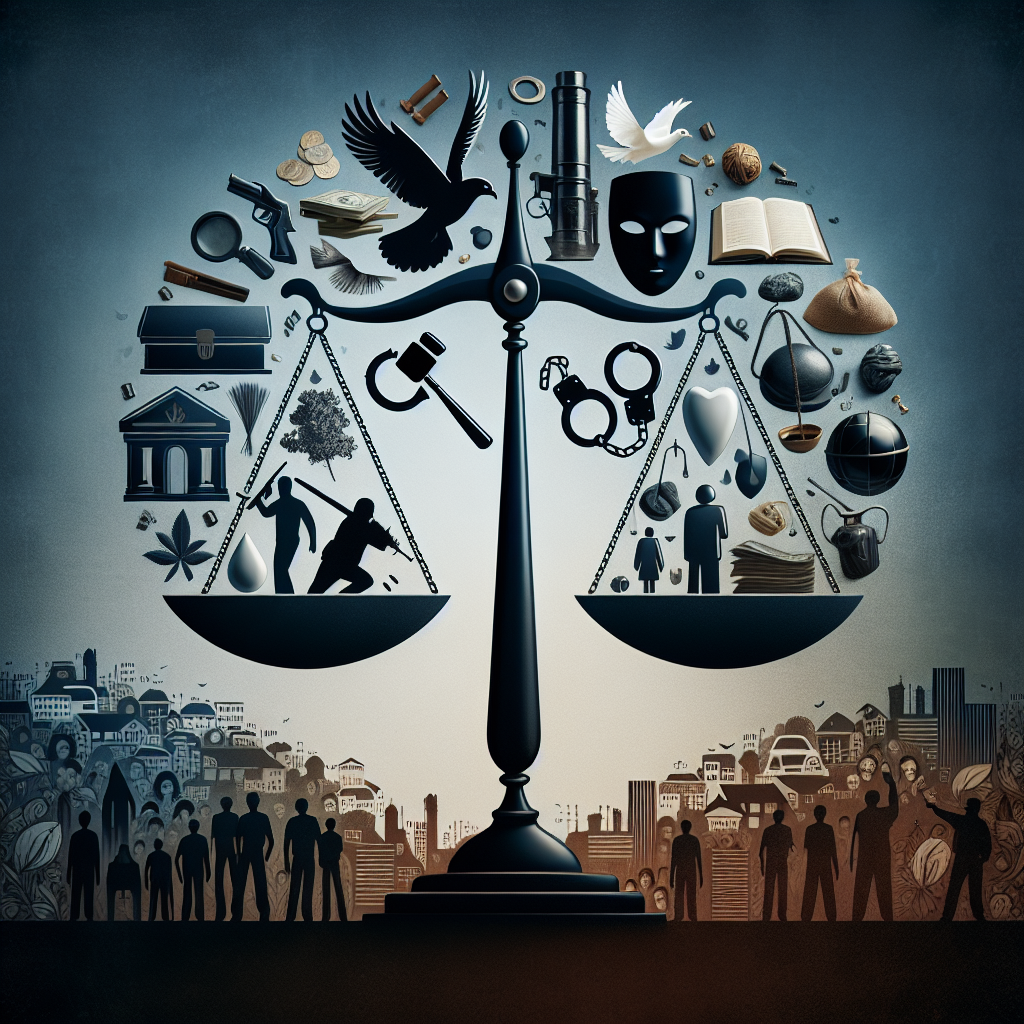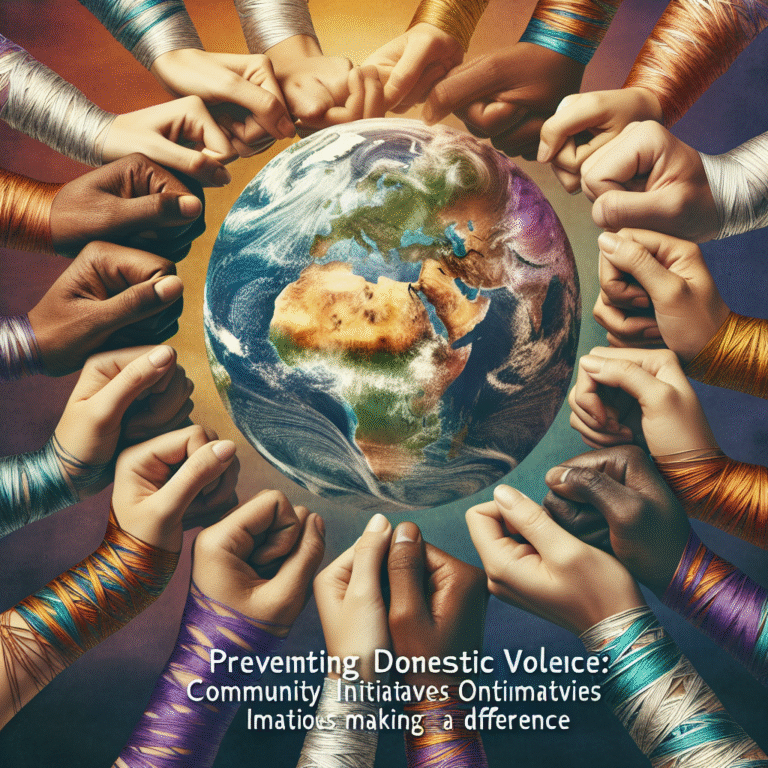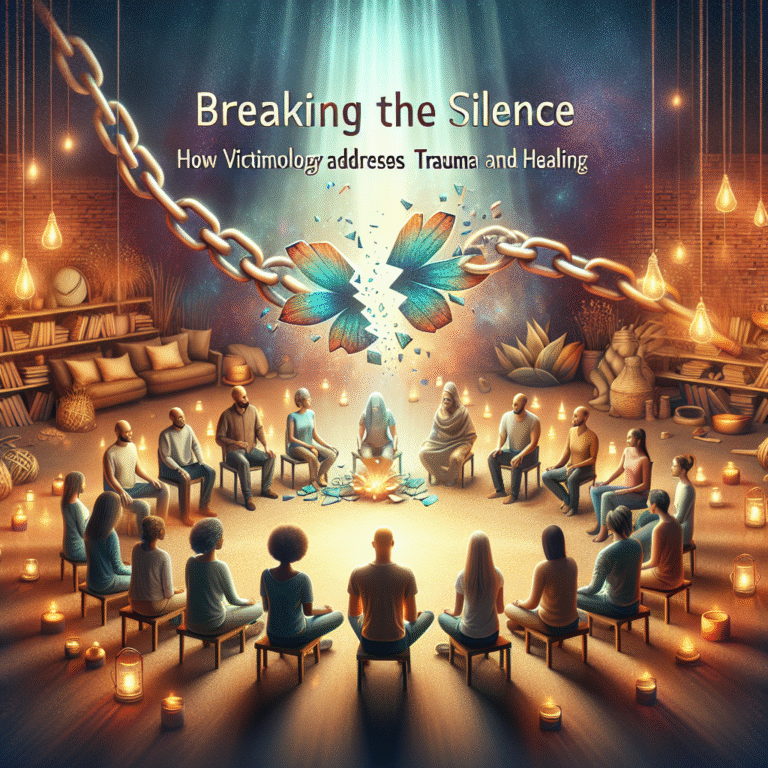
Introduction
In a world where the scales of justice seem to tip unevenly, understanding the intricate dynamics of criminological theory is essential for not only navigating but reforming our legal systems. The phrase “Beyond Crime and Punishment” encapsulates a deeper exploration of the motivations behind criminal behavior and the societal structures that facilitate or combat it. At its core, the inquiry into how criminological theory shapes justice touches on moral, psychological, and sociological dimensions — inviting us to rethink traditional views on crime and its consequences.
As we journey through this expansive topic, we will uncover various criminological theories, their real-world applications, and how these frameworks can guide us beyond mere punishment towards a more equitable and restorative system.
The Framework of Criminological Theory
Understanding Criminological Theories
Criminological theory provides a foundation for understanding the causes of criminal behaviors and societal responses to them. These theories can be categorized into several types, including:
- Classical Theory: Emphasizing the rationality of individuals and the idea that people make choices based on the potential for pleasure or pain.
- Positivist Theory: Suggesting that behavior is determined by biology, psychology, or social factors, thereby reducing the stigma associated with criminal acts.
- Social Learning Theory: Proposing that individuals learn behaviors through social interactions and are influenced by their environment.
These theories inform justice systems around the world, helping to elucidate not just how crime occurs, but how societies can respond more effectively.
Table 1: Key Criminological Theories and Their Impacts
| Theory Type | Key Concept | Impact on Justice System |
|---|---|---|
| Classical Theory | Rational choice of individuals | Emphasis on deterrent policies |
| Positivist Theory | Influences of non-choice factors | Advocates for rehabilitation over punishment |
| Social Learning Theory | Behavior learned through observation | Focus on community programs and support systems |
Case Study: The Classical Approach in Practice
The Italian Penal Code
Formulated during the Enlightenment, Italy’s penal code reflects classical theory’s ideals by establishing punishment corresponding to the crime’s severity. This framework suggests that individuals, as rational beings, can be deterred from committing crimes through clearly defined penalties.
While rational deterrence remains a vital aspect of justice, the limitations of purely punitive measures have prompted shifts in policy. Debates around the effectiveness of such deterrents have led to the incorporation of rehabilitative elements, demonstrating that understanding the motivations behind crime is essential for long-lasting solutions.
Case Study Analysis
The Italian Penal Code’s evolution illustrates that while abstraction in theory can offer clarity, real-world application demands a nuanced approach. The rigid structures of classical theory fail to account for individuals’ social circumstances, leading to a renewed focus on healing and rehabilitation within modern justice.
The Role of Sociology in Criminological Theory
Social Structure and Crime
Sociological perspectives illuminate how various societal constructs can influence criminal behavior. This includes factors such as socioeconomic status, community dynamics, and cultural norms.
- Strain Theory: Proposes that societal pressures can lead individuals to commit crimes when they feel they cannot achieve societal goals through legitimate means.
- Labeling Theory: Argues that societal reactions to crime can perpetuate criminal behavior by imposing labels that stigmatize individuals.
Both perspectives advocate for a shift in focus from punishment to addressing the root causes of crime, suggesting that social and economic reforms are vital in shaping just systems.
Chart 1: Factors Influencing Crime Rates
| Societal Factor | Impact on Crime Rates |
|---|---|
| Poverty | Increases likelihood of criminal acts |
| Education | Low levels correlate with higher crime |
| Community Cohesion | Stronger ties reduce criminal behavior |
Case Study: Community Cohesion in Action
The Chicago Alternative Policing Strategy (CAPS)
The CAPS initiative in Chicago is a prime example of utilizing sociological theories in crime reduction. Focusing on the community’s involvement in policing efforts helped foster a stronger sense of ownership and accountability among residents. This cooperative approach not only reduced crime rates but strengthened neighborhood bonds.
Case Study Analysis
The success of CAPS illustrates that a justice system informed by social learning and structural theory can lead to a significant reduction in crime. By engaging communities in holistic ways, law enforcement can promote restorative justice that extends beyond punitive measures.
The Psychological Perspective
Understanding Motivations Behind Crime
Psychological theories delve into individual behavioral motivations, analyzing factors such as trauma, mental health, and personality traits.
- Psychopathy and Antisocial Behavior: Links between emotional, cognitive factors and criminality have led to exploring psychological interventions as alternatives to incarceration for specific offenders.
Understanding these psychological components informs how justice systems can address the needs of offenders while minimizing recidivism.
Table 2: Psychological Theories and Their Applications
| Psychological Theory | Key Concept | Impact on Justice System |
|---|---|---|
| CBT (Cognitive Behavioral Therapy) | Modifying thought patterns to change behavior | Emphasizes rehabilitation over punishment |
| Trauma-Informed Care | Recognizing the impact of trauma on behavior | Integrates mental health support in judicial processes |
Case Study: The Efficacy of Cognitive Behavioral Therapy
The New York City Jail System
New York City’s integration of Cognitive Behavioral Therapy within its correctional framework has provided a renewed path focused on rehabilitation. Tailored programs to address cognitive distortions among inmates have shown promising results in reducing recidivism.
Case Study Analysis
This initiative serves as a powerful illustration of how psychological principles can thoughtfully shape justice systems and promote healing over punishment. By addressing underlying issues, the system supports both the offenders and the community’s overall safety.
Shaping Justice Innovations Through Criminological Theories
Restorative Justice: A New Paradigm
One of the most significant shifts influenced by criminological theory is the rise of restorative justice practices. This approach focuses on the restoration of relationships and communities rather than retribution and isolation.
Restorative justice involves various stakeholders — victims, offenders, and community members — working together to identify harms and create plans for restoration. This framework fits well within the broader discourse of “Beyond Crime and Punishment,” as it emphasizes healing rather than simply serving time.
Table 3: Benefits of Restorative Justice
| Benefit | Description |
|---|---|
| Empowers Victims | Allows victims to voice their experiences |
| Reduces Recidivism | Focused on behavioral change and accountability |
| Community Involvement | Engages the community in conflict resolution |
Conclusion
The landscape of justice is evolving, moving towards a more holistic understanding of crime and rehabilitation. The theories we have explored shed light on the multifaceted nature of criminal behavior and its roots in various social, psychological, and economic factors.
By embracing a comprehensive approach that goes “Beyond Crime and Punishment,” we can aspire to create justice systems that not only manage crime effectively but also foster societal well-being, promote healing, and reduce recidivism. The future of justice lies not in mere retribution, but in understanding, restoration, and growth — a profound transformation driven by criminological insight.
FAQs
1. What are the main goals of criminological theory?
Criminological theory aims to understand the causes of crime, inform justice policies, and rehabilitate offenders. Through various frameworks, it seeks to create a more effective and equitable justice system.
2. How does restorative justice differ from traditional justice?
Restorative justice focuses on repairing harm and fostering peace among all parties involved, whereas traditional justice often centers on punishment and retribution.
3. What role do societal factors play in crime?
Societal factors such as poverty, education, and community cohesion significantly influence crime rates, as they impact individuals’ opportunities and socialization experiences.
4. Can psychological theories effectively reduce crime?
Yes, incorporating psychological interventions like Cognitive Behavioral Therapy can help address the root causes of criminal behavior, leading to lower recidivism rates.
5. How can communities play a role in shaping justice?
Communities can engage in dialogue and cooperative initiatives to foster inclusivity and accountability, ultimately leading to a more restorative and healing-oriented approach to justice.
Embracing the insights from criminological theory allows us to seek justice that prioritizes healing and understanding over mere punishment, ultimately ushering in a more equitable society.


















